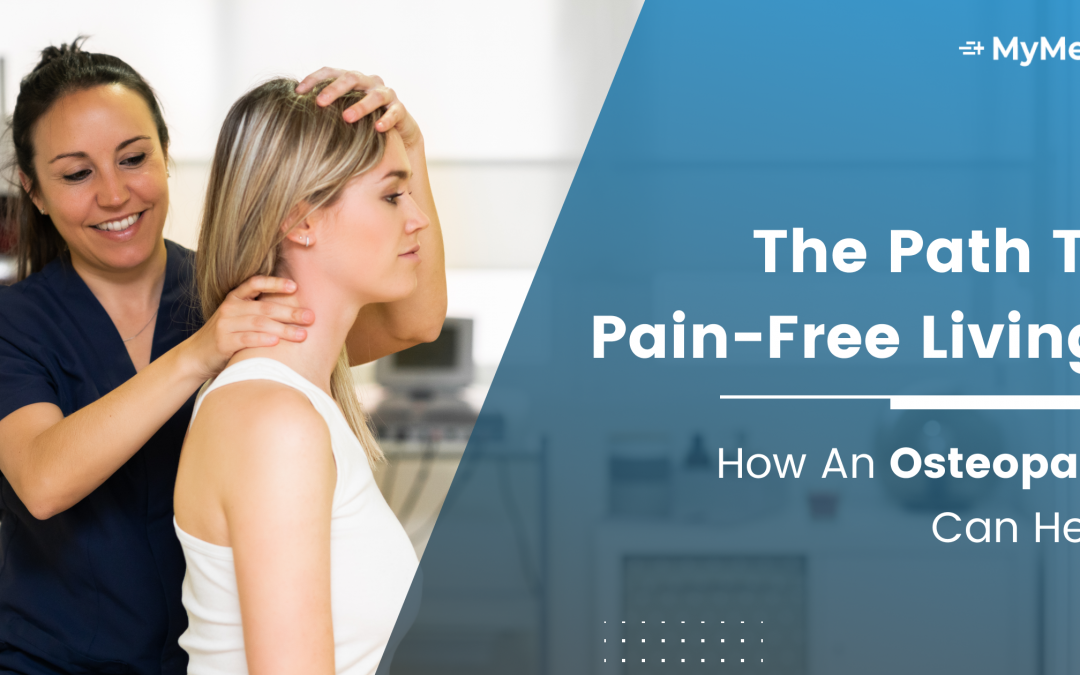Are you suffering from aching back or joint pain? Don’t worry, you are not the only sufferer. Everyone, regardless of age, faces such issues at some point, and they are frequently the result of spending all day sitting in a chair, driving long distances, doing labour, or participating in sports. Even some leisure activities or routine home chores can put pressure on the body and lead to positional strains and anxieties. For instance, gardening on your lawn or doing some intense workouts in the gym might cause acute pain or injuries to the body. Nevertheless, it is quite relieving that osteopathy treatment is there to help you out in such situations.
What is Osteopathy Treatment?
Osteopathy is concerned with the structure and function of the human body. It is founded on the premise that an individual’s well-being is dependent on their bones, muscles, ligaments, and connective tissues all working together harmoniously. Osteopaths utilize physical manipulation, stretching, and massage to treat anything from arthritis to back pain, headaches, and tennis elbow, as well as digestive and postural difficulties. An osteopath will employ a range of massage methods, such as soft tissue stretching, deep sensory pressure, and joint manipulation.
After Effects of Osteopathy Treatment
- Tiredness: Since osteopathic therapy involves the manipulation of muscles and joints, you are more likely to experience weariness following treatment. This may not be an issue, as it normally dissipates after a nice rest. However, there are a few instances where this might be harmful to your health. Thus, osteopaths don’t recommend you drive or operate heavy machinery after taking the osteopathy therapy. Also, avoid strenuous activities immediately following your exercises, since this may result in injuries or mishaps due to your exhaustion.
- Allergic Reactions: It doesn’t happen usually, but sometimes you might be allergic to the oils and creams your osteopath uses for the therapy. It can be due to sensitive skin or that you’re suffering from dermatographism. Hence, it’s suggested that you check with your therapist regarding the ingredients of the oils and creams they are going to use. If you have an adverse reaction to the oils used, it is essential to wipe off all of the oils from your skin completely and as soon as possible. There are rare chances that you have a life-threatening reaction, but if it happens, you should go to the nearest hospital right away.
- Deteriorated Infections: There is also the possibility that the oils and lotions used will react with the gaping sores and infections. This is why, before commencing therapy, you must always notify your osteopath about any infections. Osteopathic treatments can make an infection worse before it improves. This is due to the fact that the therapy increases the movement of contaminated fluids throughout the body, which might result in an unpleasant sensation. This, however, only lasts a few days before the infection drains. In the worst-case scenario, an infection can produce long-term symptoms such as persistent pain and headaches. It is essential to seek medical assistance in such cases.
5 Key Benefits of Osteopathy Treatment
1. Noninvasive Treatment
The fact that this therapy is fully noninvasive is the most striking part of it. Furthermore, no surgery is required to treat a patient. Osteopathic therapy procedures are often soothing rather than unpleasant. This is the treatment where hands are used rather than any tools, and some osteopaths also propose some dietary changes. Being a painless cure, it is ideal for every age group, from the young to the elderly.
2. Handle Chronic Pain
Osteopathy is notably effective in treating arthritis, back and neck discomfort, headaches, and tendons and ligament damage after an injury or sprain. In addition to addressing the underlying cause of chronic pain, osteopathy is beneficial in reducing joint strain, improving posture, releasing the tension, and dramatically increasing the range of motion without adding additional stressors. It can alleviate the symptoms of diseases like asthma and irritable bowel syndrome. While the therapy primarily focuses on the musculoskeletal system, the advantages of osteopathy extend to a wide range of damaged tissue, including organs.
3. No Medication
If you visit any doctor or healthcare specialist for the treatment of any illness, you will have to go through various types of tests or scans. In addition, they will ask you to take plenty of medicine. Medication has an effect on other sections of the body, causing them to malfunction. Osteopathy, on the other hand, does not use any medicine. As a result, your body is spared the repercussions of the chemicals employed in many treatments. This suggests there are no significant negative effects.
4. Boost Fluid Flow
It improves blood circulation to better transport nutrients and oxygen throughout the body, lowers blood pressure, reduces inflammation, restores lymphatic balance to aid in physiological detoxification, cures sleep apnea, encourages improved sleep patterns, and boosts overall wellbeing. Osteopathic treatment can help patients establish and maintain a better, healthier lifestyle, allowing them to heal faster and avoid additional injury, suffering, or sickness. It’s an excellent technique to relieve stress, return the body to its natural state, and promote healing.
5. Make Pregnancy Easier
Hormonal and anatomical changes during pregnancy can be quite uncomfortable. Relaxation, for example, causes the tendons in the feet to expand apart and the hips to shift form. This is a normal component of pregnancy, but it can create muscular strain, systemic stress, and chronic pain. Even under duress, osteopathic therapy may alleviate most of this physiological discomfort and assist in restoring equilibrium.
In final words, osteopathy treatment is a boon for people who don’t want to undergo surgical treatment or take medicine for an extended period of time. A combination of therapy sessions and massage techniques can help you get rid of acute pain and also some digestive disorders. Therefore, opting for osteopathic therapies could act as the biggest pro for pain sufferers.
